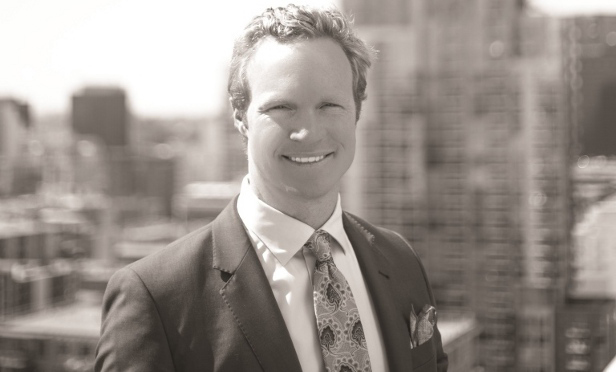
SAN DIEGO—Free address allows all employees to choose the type of space that best supports the work they are doing at that given moment, CBRE managing director Paul Komadina tells GlobeSt.com. As we recently reported, the firm has relocated its central San Diego offices in UTC across the street to Westfield's shopping center, keeping its Workplace360 model, which includes a free-address workplace and a focus on workplace strategy. We spoke with Komadina about both of these concepts and how they work with those accustomed to a traditional office layout.
GlobeSt.com: What is workplace strategy and how are you implementing it at CBRE?
Komadina: Workplace strategy is a thoughtful way of aligning your workplace to help you achieve your business objectives. There is no one-size-fits-all approach because every business is different. At CBRE, we are implementing our own strategy, which we call Workplace360 and is intensely focused on the employee experience and designing an office that fits the way our people work. One key element, among many others, is called “free address.”
GlobeSt.com: What are the common misconceptions about “free address,” and what does the term actually mean?
Komadina: The term free address means that no employee, regardless of role or tenure, has an assigned workspace. In our old environment, workstations were only occupied 48% of the time, so it allows us to use workstations more efficiently while providing a greater amount and variety of space from which our employees can choose.
Free address allows all employees to choose the type of space that best supports the work they are doing at that given moment. Different people thrive in different types of environments, and different types of work require unique spaces to get the work completed most effectively.
In our new office at Westfield UTC, we have 14 different places that people can work, compared to three in the old environment. This variety of space includes open workstations, phone rooms, focus rooms, offices for a day, huddle rooms, open team areas and small and large conference rooms. Free address does not mean one big open office.
GlobeSt.com: How do you convert traditional office workers into free address when they are accustomed to private corner offices?
Komadina: Change is difficult. It requires a great deal of planning, time and strategy to implement a successful change-management strategy. To get people ready successfully, there were two elements required. First, you must give them something in return for their dedicated space. Second, you must prepare them to be ready for the new environment.
In exchange for their dedicated space, we gave them an office with 14 different types of space to work in instead of the three they had in the old space. We also gave them an office intensely focused on hospitality, including two full-time concierges and a valet for many employees and all guests.
To prepare them, we implemented a very thoughtful and structured change-management program over two years that resulted in emptying 400 file drawers, scanning close to 900,000 documents and extensive technology training to live in a paperless environment.
Lastly, it is vital to lead by example. When you ask your employees to support a workplace change of this magnitude, it is critical to be the first to make those changes. I have not had an office in years.
GlobeSt.com: How does change management come into play from both the employee's and the employer's perspective so that this conversion is a win-win for everyone?
Komadina: The “how” you get ready (change management) is very rarely talked about, but is perhaps the most critical element to implementing a successful strategy. There are a number of things necessary to designing the right space and getting people ready. The key elements are:
- Assess your needs and determine how change links to your business objectives. Partner with workplace experts to assess how your employees work throughout the day and what environment and tools will best support them in each activity (we consulted with CBRE's Workplace Strategy Group).
- Start early. We were planning our move 24 months in advance. This gives your team an opportunity to adjust while still in familiar surroundings and will ensure they are prepared for day one.
- Get everyone involved. We created three committees (Art and Branding, Health and Wellness, and Experience) to help shape the office environment.
- Communication is key. We sent regular email updates, held regular meetings about what to expect, hosted weekly training sessions and gave everyone an opportunity to share their experiences along the way.
GlobeSt.com: What else should our readers know about your space and the approaches to workplace strategies?
Komadina: In our new space we have incorporated the following:
Concierge Program—We have two full time concierges that are dedicated to the employee and guest experience.
Wellness Program—Our wellness committee has developed a full-scale wellness program that includes partnerships with fitness providers hosting weekly yoga and fitness classes. It also incorporates education through monthly educations sessions on a variety of topics. With hydrations stations throughout the space and height-adjustable work stations, we are promoting a healthy workplace that will result in healthier and happier employees.
We practice what we preach—We advise from a position of experience since we've introduced 35 Workplace360 offices around the world.
In today's environment, if you're not talking about workplace strategy, and incorporating things like technology or wellness into your space, you're at a disadvantage. Better business performance begins with better workplace performance.
© 2025 ALM Global, LLC, All Rights Reserved. Request academic re-use from www.copyright.com. All other uses, submit a request to [email protected]. For more information visit Asset & Logo Licensing.







